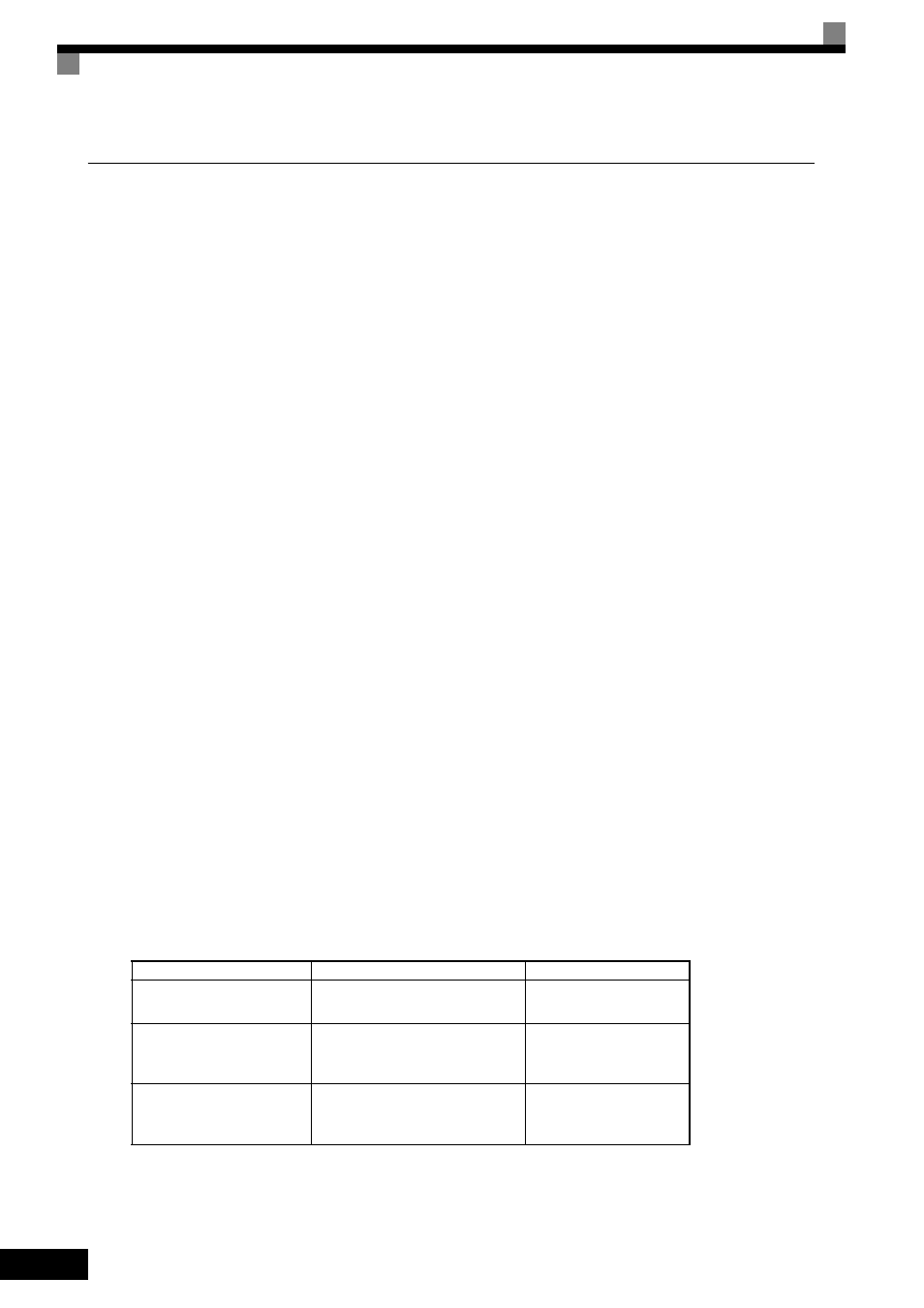Auto-tuning – Yaskawa Matrix Converter User Manual
Page 91

4
-8
Auto-Tuning
Use the following procedure to perform Auto-Tuning if using the vector control method or when using a long
motor cable. Auto-Tuning calculates the motor characteristics and automatically sets all necessary motor
parameters.
If the control method was changed after Auto-Tuning, be sure to perform Auto-Tuning again.
The following types of Auto-Tuning are possible in the MxC:
•
Rotational Auto-Tuning
•
Stationary Auto-Tuning for line-to-line resistance only
•
Stationary Auto-Tuning 2
Precautions Before Performing Auto-Tuning
Read the following precautions before Auto-Tuning the MxC.
•
Auto-Tuning the MxC is fundamentally different from Auto-Tuning a servo system. The MxC Auto-Tun-
ing automatically adjusts motor parameter settings according to detected motor characteristics, whereas
servo system Auto-Tuning adjusts parameters according to the size of the load.
•
When speed or torque precision is required at high speeds (i.e., 90% of the rated speed or higher), use a
motor with a rated voltage that is 20 V less than the input power supply voltage of the MxC for 200V class
MxCs and 40 V less for 400V class MxCs. If the rated voltage of the motor is the same as the input power
supply voltage, the voltage output from the MxC will be unstable at high speeds and sufficient perfor-
mance will not be possible.
•
Use Stationary Auto-Tuning 2 whenever performing Auto-Tuning for a motor that is connected to a load.
•
Use Rotational Auto-Tuning whenever performing Auto-Tuning for a motor that has fixed output charac-
teristics, when high precision is required, or for a motor that is not connected to a load.
•
If Rotational Auto-Tuning is performed on a motor connected to a load, the MxC will be unable to accu-
rately calculate the best motor parameters, which may cause the motor to exhibit operate abnormally.
Never perform Rotational Auto-Tuning on a motor connected to a load.
•
If the wiring between the MxC and motor changes by 50 m or more between Auto-Tuning and motor
installation, perform Stationary Auto-Tuning for line-to-line resistance only.
•
If the motor cable is long (50 m or longer), perform Stationary Auto-Tuning for line-to-line resistance only,
even when using V/f Control.
•
The table below shows the status of the multi-function inputs and multi-function outputs during Auto-Tun-
ing. When performing Auto-Tuning with the motor connected to a load, be sure that the holding brake is
not applied during Auto-Tuning, especially when working with conveyor systems or similar equipment.
•
The STOP key can be used to abort Auto-Tuning.
•
Power will be supplied to the motor when Stationary Auto-Tuning is performed even though the motor
will not rotate. Do not touch the motor until Auto-Tuning has been completed.
Tuning Mode
Multi-Function Inputs
Multi-Function Outputs
Rotational Auto-Tuning
Disabled.
Same as during normal
operation.
Stationary Auto-Tuning for
line-to-line resistance only
Disabled.
All outputs maintain same
status as when Auto-Tun-
ing was started.
Stationary Auto-Tuning 2
Disabled.
All outputs maintain same
status as when Auto-Tun-
ing was started.